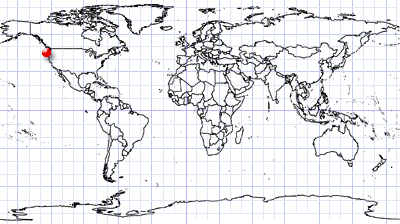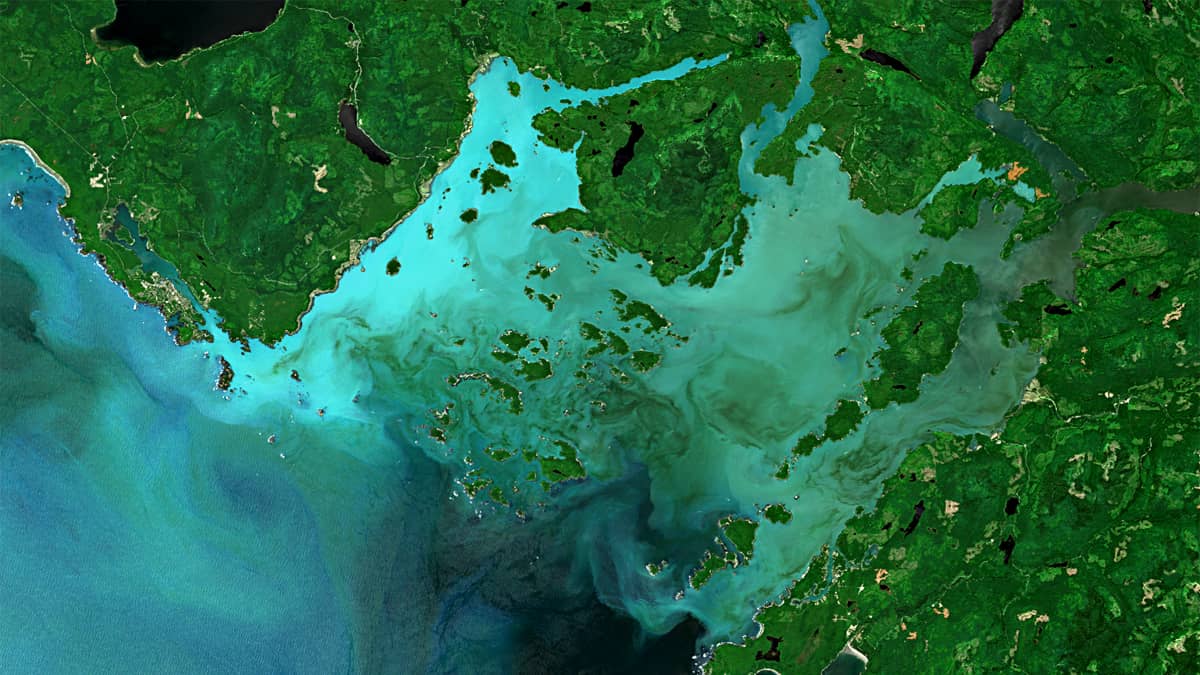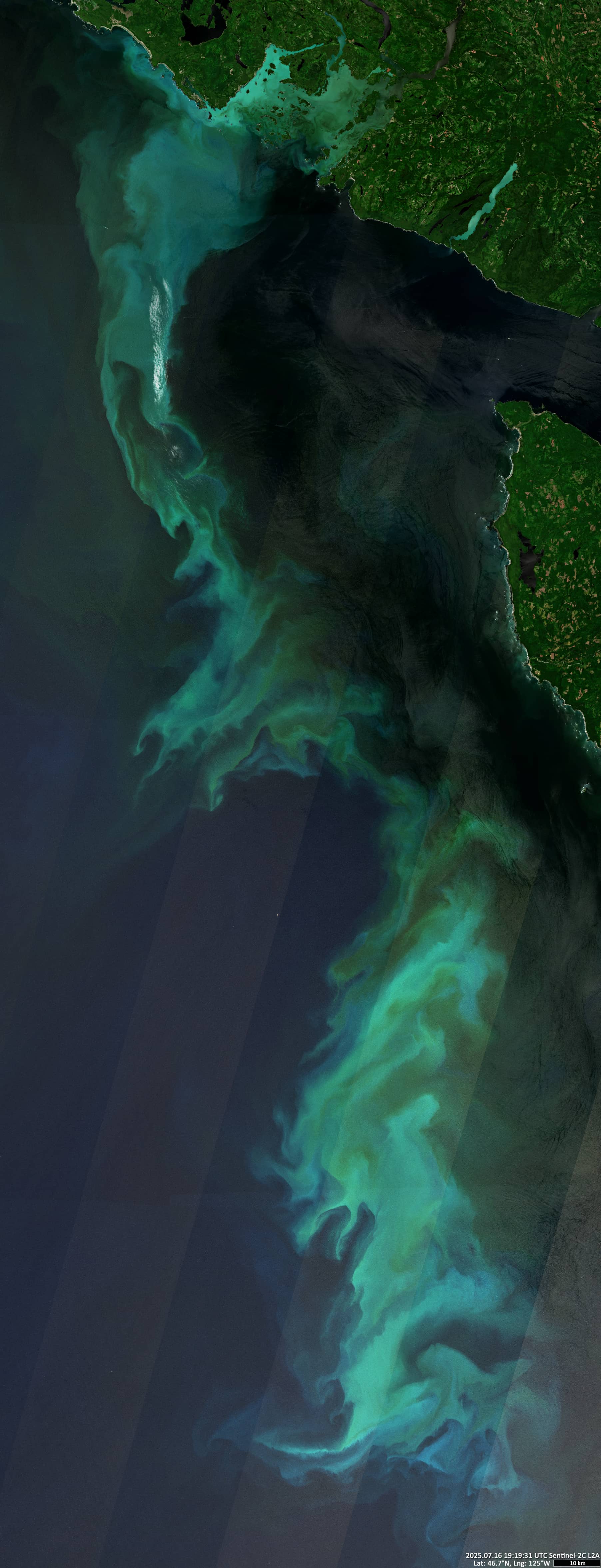
Phytoplankton bloom in Northeast Pacific
Off the Washington/Oregon coast | Northeast Pacific Ocean
Date of acquisition: July 16th, 2025 | 19:19:31 UTC
Sensors: Sentinel-2C,B L2A
Coordinates: ca. 47°N, 125°W
This satellite image shows a phytoplankton bloom event in the north-eastern Pacific Ocean, in an area known as the Juan de Fuca eddy. The bloom originated in the Barkley Sound area off Vancouver Island and has spread southwards along the coast of the US state of Washington. The bloom is more than 310 km long and up to 30 km wide in the south.
This is a notable observation, given the large size and intensity of the algal bloom field which can be observed thanks to the cloud free weather conditions.
This field might contain coccolithophores, which reflect a milky-blue-turquoise light. Large quantities of the toxic algae Pseudo-nitzschia which produces domoic acid have also been found in the Strait of Juan de Fuca, which separates Vancouver Island to the north and the US state of Washington to the south. This substance is potentially harmful to human health.
Both phytoplankton species, as well as others, are likely to be present in the bloom.
Further reading
Algae bloom turns coastal waters off Vancouver Island tropical blue (Chek News)
Toxic Algal Bloom off Washington (NASA Earth Observatory 2004)




